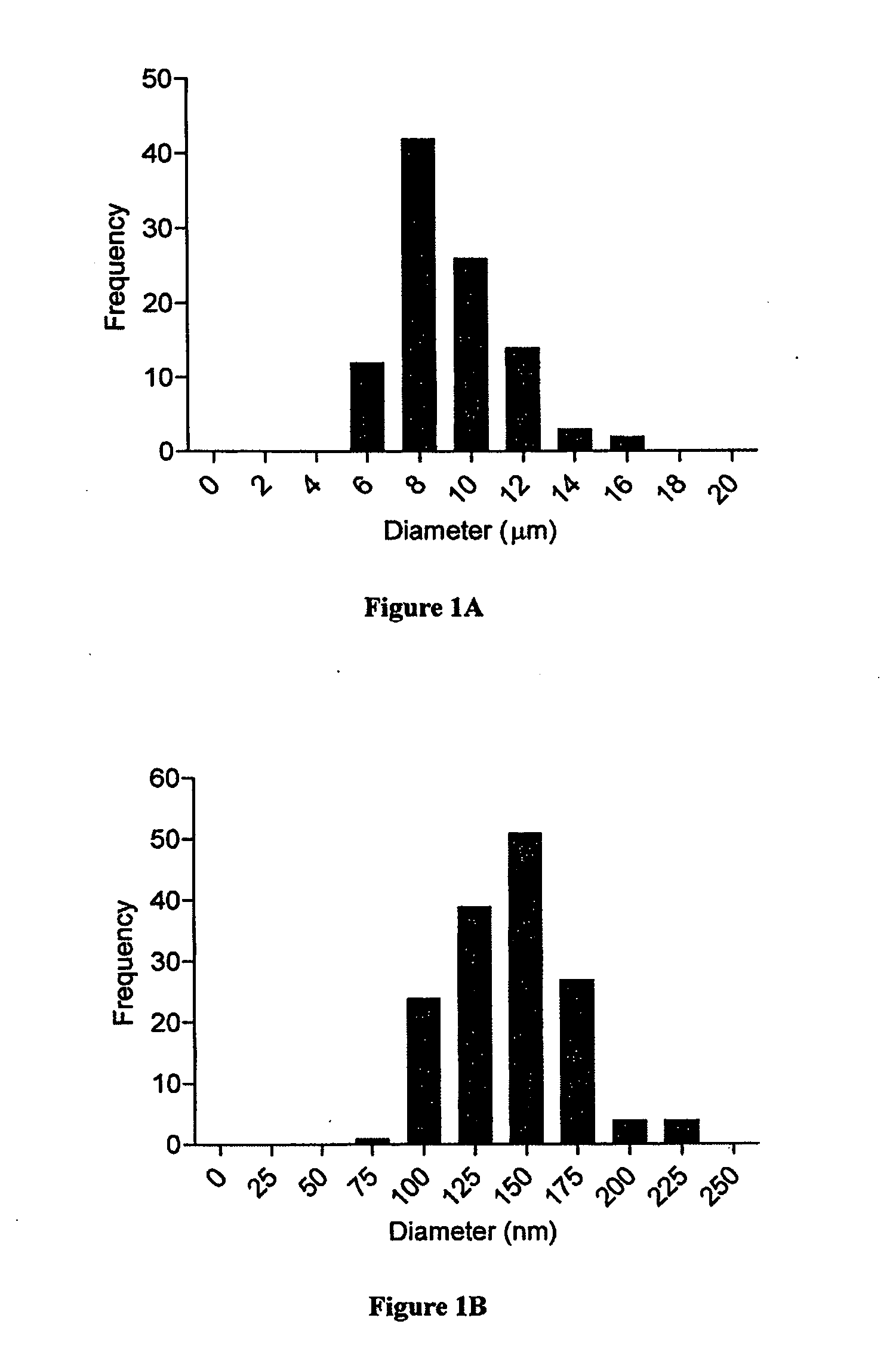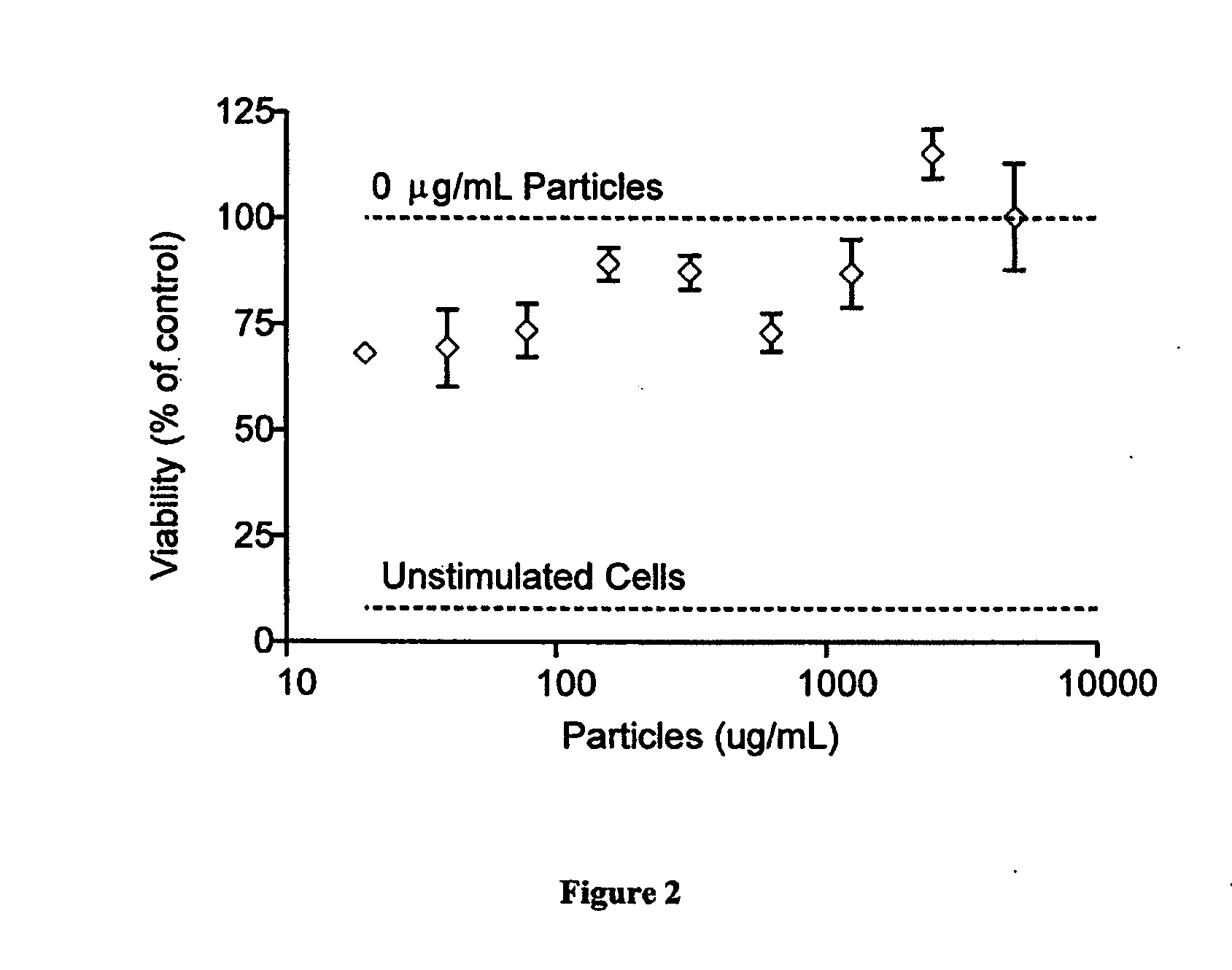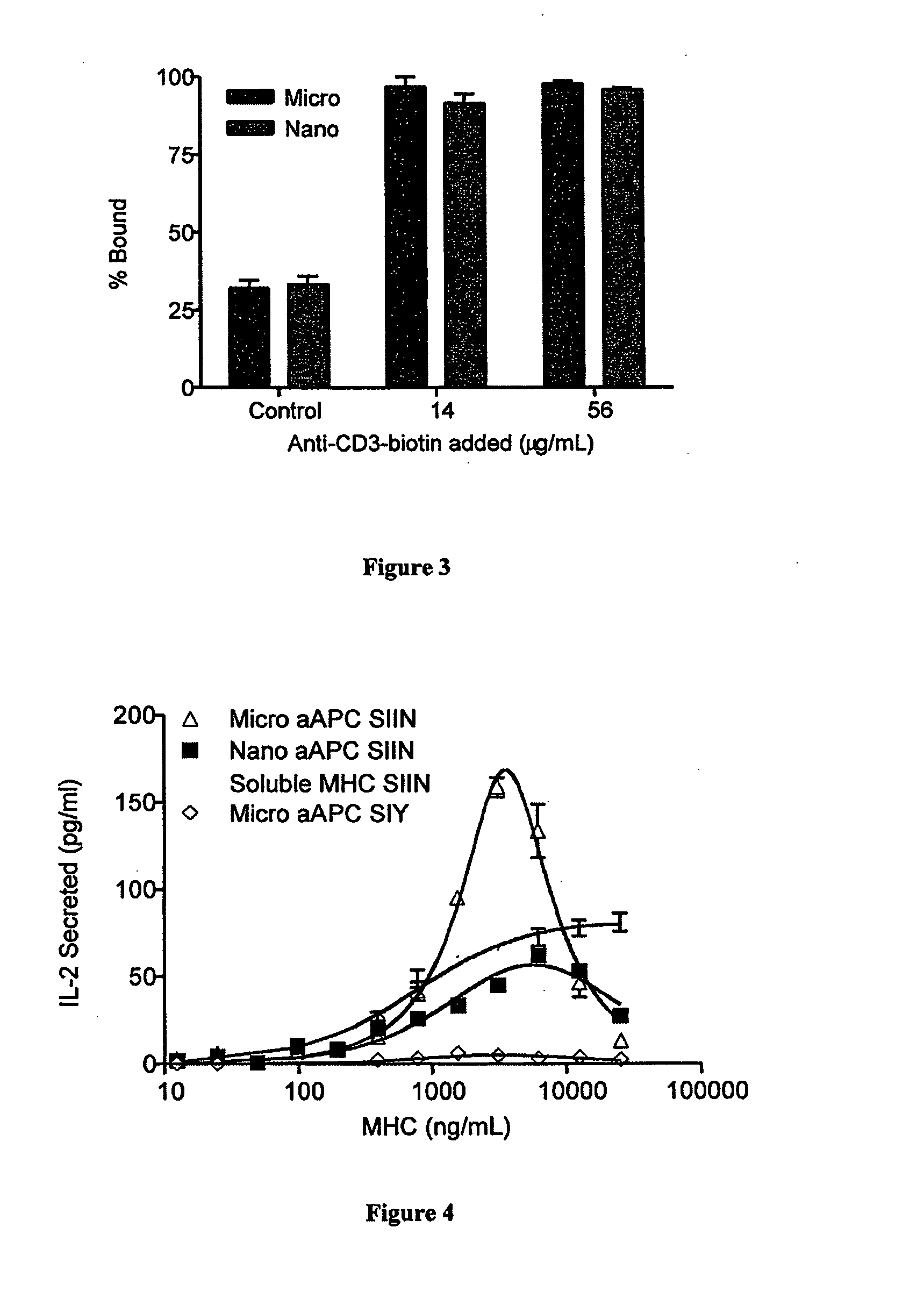Compositions and methods for adoptive and active immunotherapy
a technology of immunotherapy and antigen, applied in the field of artificial antigenpresenting cells, can solve the problems of lack of biocompatibility, limited generalization of this therapy, and high risk of potential infection or tumorigenicity, and achieve the effect of enhancing t cell activation and proliferation, and less concentration
- Summary
- Abstract
- Description
- Claims
- Application Information
AI Technical Summary
Benefits of technology
Problems solved by technology
Method used
Image
Examples
example 1
Fabrication of aAPCs
[0246]Materials and Methods:
[0247]Fabrication of aAPCs:
[0248]Poly(lactide-co-glycolide) (PLGA) 50 / 50 with an average molecular weight of 80 kDa was obtained from Durect Corporation, Cupertino, Calif. Microparticles were fabricated using a single emulsion oil-in-water technique, while nanoparticles were created using a double emulsion water-in-oil-in-water technique (Jain, Biomaterials, 21(23):2475-90 (2000)). Both were surface modified with avidin-palmitate conjugate as described previously (Fahmy, et al., Biomaterials, 26(28):5727-36 (2005)). Particles were lyophilized and stored at −20° C. until use.
[0249]Characterization of aAPCs:
[0250]Particles were imaged using scanning electron microscopy. Images were analyzed with NIH Image) to determine the size distribution of particle diameters by counting at least 150 particles per sample. For loaded IL-2 aAPCs, a controlled release profile was obtained in PBS at 37° C. ELISA analysis was performed to measure rhIL-2 le...
example 2
Antigen-Specific T Cell Stimulatory Effects of aAPCs
[0255]Materials and Methods:
[0256]Cell Lines and Primary Cells:
[0257]Animal studies were approved by the Institutional Animal Care and Use Committee (IACUC) at Yale University. All animals were routinely used at 6-8 weeks of age, were maintained under specific pathogen-free conditions, and were routinely checked by the Yale University Animal Resource Center. C57BL / 6 (B6) mice were obtained from Jackson Laboratories (Bar Harbor, Me.). OT-I TCR transgenic breeder mice were a generous gift from Ruslan Medzhitov (Yale University) and were bred heterozygous on a B6 background in our animal facility. Phenotypes were screened using V-alpha2 and CD8a antibodies (eBioscience, San Diego, Calif.). B3Z hybridoma cells with TCR specific for SIINFEKL peptide (OVA257-264) were a generous gift from Peter Cresswell (Yale University) and were maintained in RPMI-1640 (Invitrogen, Carlsbad, Calif.) supplemented with 10% FBS (Atlanta Biologicals, Lawre...
example 3
Effects of Co-Stimulatory Signals on the Effectiveness of aAPCs for T Cell Stimulation
[0265]Materials and Methods:
[0266]Assessment of Expansion by Flow Cytometry:
[0267]CFSE-labeled B6 splenocytes or OT-I CD8 T cells (2×106 cells) were exposed to various concentrations of soluble ligands (anti-CD3 for polyclonal stimulation and SIINKb dimers for antigen-specific stimulation (anti-CD28 was present in both cases at a 1:1 molar ratio) or ligand coated aAPCs in the presence or absence of rhIL-2 and trehalose. Antibodies and rhIL-2 were added to achieve the indicated final concentrations in 2 mL of media. aAPCs were added at 0.3 mg / mL final concentration (40:1 cells:aAPCs). Dynal beads were used at a 3:1 ratio of beads:cells with concentrations of antibody equal to aAPCs. All antibodies, aAPCs, rhIL-2, and trehalose were added at the beginning of the experiment without restimulation during the course of the study. Cell aliquots were obtained on day 4, and flow cytometric analysis was perf...
PUM
| Property | Measurement | Unit |
|---|---|---|
| concentrations | aaaaa | aaaaa |
| concentrations | aaaaa | aaaaa |
| concentration | aaaaa | aaaaa |
Abstract
Description
Claims
Application Information
 Login to View More
Login to View More - R&D
- Intellectual Property
- Life Sciences
- Materials
- Tech Scout
- Unparalleled Data Quality
- Higher Quality Content
- 60% Fewer Hallucinations
Browse by: Latest US Patents, China's latest patents, Technical Efficacy Thesaurus, Application Domain, Technology Topic, Popular Technical Reports.
© 2025 PatSnap. All rights reserved.Legal|Privacy policy|Modern Slavery Act Transparency Statement|Sitemap|About US| Contact US: help@patsnap.com



